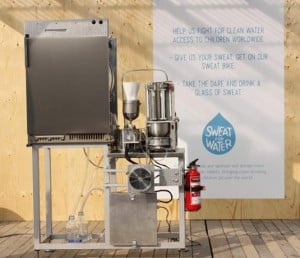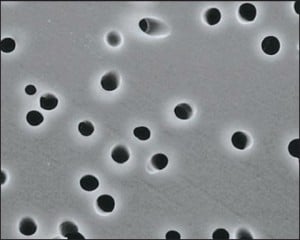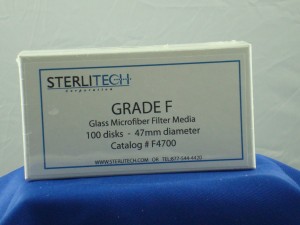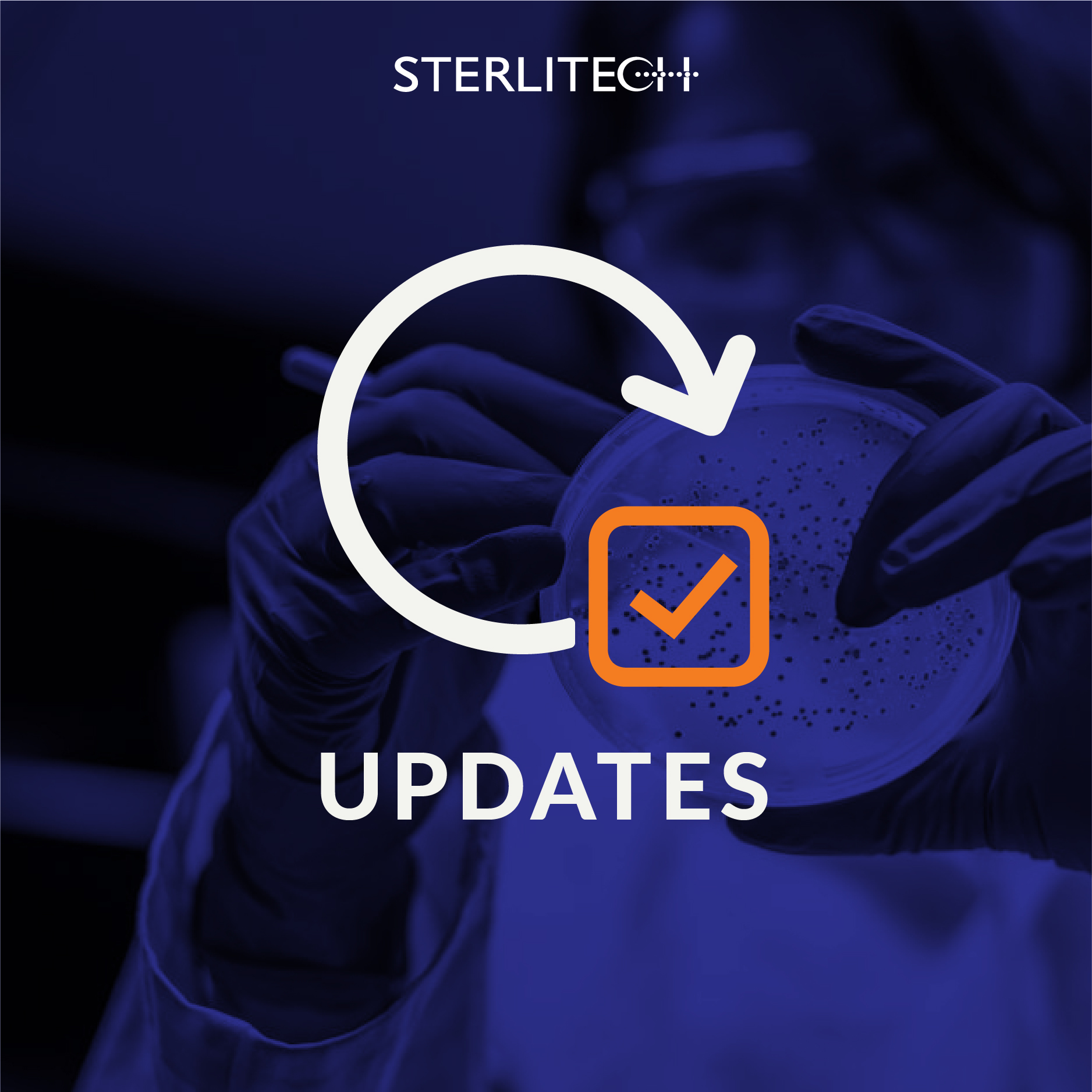People do strange things for attention. Children throw tantrums, celebrities shave their heads and UNICEF builds a machine to take the sweat from your clothes and turn it into drinking water. UNICEF, at least, is trying to raise awareness of the lack of clean water for children with its unusual machine. Unveiled during the Gothia Cup, and built by Swedish engineer Andreas Hammar, the aptly named Sweat Machine works by using membrane distillation to separate water from other components of sweat. Unlike other membrane-based processes of water purification, such as reverse osmosis, membrane distillation is a thermally-driven process that employs a hydrophobic, microporous membrane. The water (or sweat) to be processed is heated, while the water on the permeate side of the membrane is kept cool. The temperature difference across
Monthly Archives: July 2013
- Monday, July 29, 2013
- Monday, July 29, 2013
Place a polycarbonate (PCT) or polyester (PET) membrane under an electron microscope and you'll see something similar to the picture here: a smooth surface perforated with neat, cylindrical holes. In this aspect, PCT and PET membranes stand out from other membrane types such as PTFE, nylon, or silver which provide irregular, tortuous paths for permeates to follow. So how are the regular little pores created? Are they drilled, punched, molded or torn into the membrane? If you guessed etched in with the help of a nuclear reactor, then you are absolutely right.
Every PCT or PET membrane filter starts as a roll of plastic film stock. The film is exposed in a controlled manner to charged particles in a nuclear reactor. The charged particles pass through the film, leaving behind sensitized tracks. The density of these tracks in the film depends on the amount of time that the film is exposed to the reactor. More time in the reactor
- Monday, July 29, 2013
Water, whether seawater or freshwater, is rarely just H2O. Dissolved nitrites and nitrates in particular play a key role in the survival of aquatic flora like seaweeds. In 2005, Matthew R. McIlvin and Mark A. Altabet devised a now common method to analyze the isotopic composition of nitrogen and oxygen dissolved in water in the form of nitrates and nitrites. The method, which can be found here, requires the removal of all organic matter in the samples. The Grade F borosilicate glass fiber filter, with fine porosity, medium flow rate, and a 0.7 micron size particle retention, is the tool of choice for removing organic matter from water samples.
- Tuesday, July 23, 2013
Today, we have a new video that shows you how to assemble a Sepa CF II cell and get it ready to perform reverse osmosis, nanofiltration, ultrafiltration or microfiltration at pressures up 1000 psig (69 bar). To learn more about the Sepa CF II, you can visit our Sepa CF II page here.






![Join Sterlitech at BIO 2024 [Booth #5558]: Exploring the Future of Biotechnology](https://www.sterlitech.com/media/magefan_blog/b4.jpeg)

